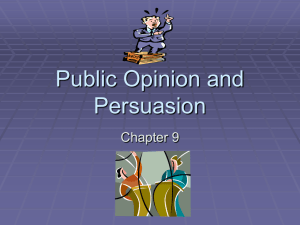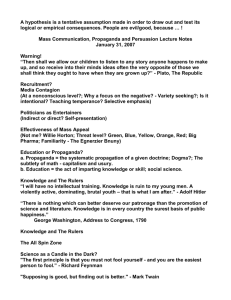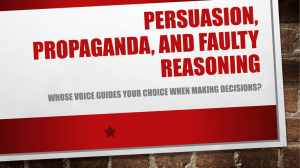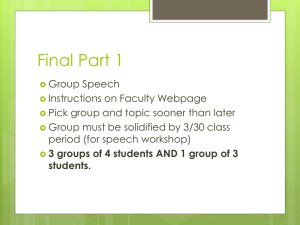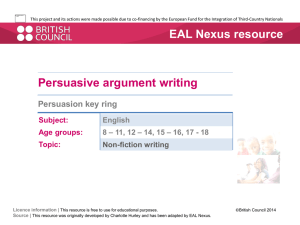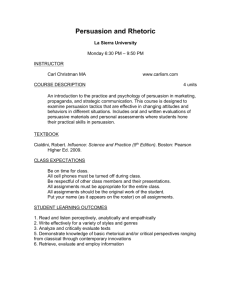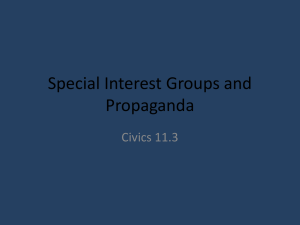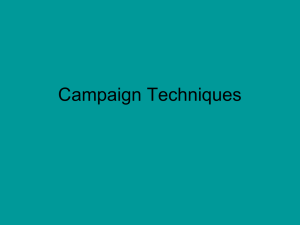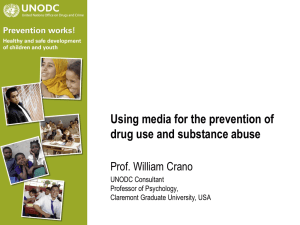Chapter 1: What is Public Relations?
advertisement
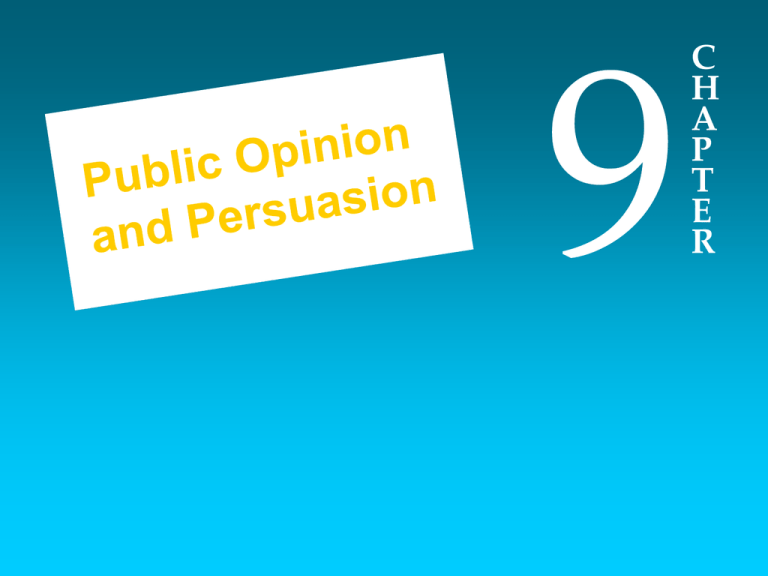
C H A P T E R Topics Covered in Chapter 9 What is Public Opinion Opinion Leaders as Catalysts The Role of Mass Media Persuasion: Pervasive in Our Lives Factors in Persuasive Communication Propaganda Persuasion and Manipulation The Ethics of Persuasion What is Public Opinion Public opinion is somewhat elusive and extremely difficult to measure at any given moment. Public opinion is defined as 1) opinions on controversial issues that one can express in public without isolating oneself, 2) the sum of individual opinions on an issue affecting those individuals, or 3) a collection of views held by persons interested in the subject. Key ideas in understanding pubic opinion is the concept of self-interest as well as the importance of events in the formation of public opinion. Opinion Leaders as Catalysts Opinion leaders serve as catalysts for the formation of public opinion through their knowledge and ability to articulate ideas about specific issues. Sociologists describe them as: (1) Highly interested in a subject or issue (2) Better informed on an issue than the average person (3) Avid consumers of mass media (4) Early adopters of new ideas (5) Good organizers who can get other people to take action Opinion Leaders as Catalysts cont Sociologists have defined two types of leaders. First, formal opinion leaders or power leaders have positions of power and tapped for information about specific issue related to their areas of responsibility or concern. Second, informal opinion leaders have clout with peers because of some special characteristic. Public relations professionals try to influence these leaders as they try to influence the public at large. Opinion Leaders as Catalysts cont With the two-step flow theory of communication, it is understood that public opinion is formed by the views of people who have taken the time to sift information, evaluate it, and form an opinion that is expressed to others. With the multiple-step flow model opinion makers who derive their large amounts of information from the mass media and other sources share it with people their circle of acquaintances. The Role of Mass Media Via the mass media, public relations people become major players in forming public opinion because they often provide the mass media with the information in the first place. The following theories can help practitioners understand mass media effects: Agenda Setting Theory Media Dependency Theory Framing Theory Conflict Theory Agenda Setting Agenda setting is the process by which the media communicate the relative importance of various issues to the public. (Rogers and Dearings 1988) Policy agenda Media agenda Public agenda Corporate agenda 全球传媒体系的几种法则 议程设置与新闻话语权 《大众传媒的议程设置功能》:人们倾向于关注大众传媒 所关注的问题,并依据媒介对各种问题的重视程度而确立 自己看待事物的优先顺序。 案例:中美撞击事件 第一经验环境,第二经验环境 宣传是指推进或破坏某一事业的观点或信息的传播。 新闻框架 框架是指人们在适应周围的社会过程中,逐渐形成自己的 认知框架,并按照它来调整自己的行为的期望值。 案例:关于非典的报道 Persuasion: Pervasive in Our Lives Persuasion has been around since the dawn of human history. Persuasion is used to 1) change or neutralize hostile opinions, 2) crystallize latent opinions and positive attitudes and 3) conserve favorable opinions. The dominant view of public relations is one of persuasive communication actions performed on behalf of clients. Factors Pervasive Communication A number of factors are involved in persuasive communication, and the public relations practitioner should be knowledgeable about each one, including (1) Audience analysis (2) Source credibility (3) Appeal to self-interest (4) Clarity of message (5) Timing and context (6) Audience participation (7) Suggestions for action (8) Content and structure of messages (9) Persuasive speaking Propaganda Propaganda is defined as the deliberate and systematic attempt to shape perceptions, manipulate cognitions, and direct behavior to achieve a response that furthers the desired intent of the propagandist. Propaganda has its roots in 17th century, when the Roman Catholic Church set up the “congregatio de propaganda” or congregation for propagating the faith. In the 20th century, it took on a negative connotation. Today, propaganda connotes falsehood, lies, deceit, disinformation, and duplicity. Propaganda cont. Advertising and public relations messages for commercial purposes use several techniques commonly associated with propaganda, including: Plain folks Testimonial Bandwagon Card stacking Transfer Glittering generalities Propaganda cont. Plain folks is an approach often used by individuals to show humble beginnings and empathy with the average citizen. Political candidates, in particular, are quite fond of telling about their “humble” beginnings. Testimonial is frequently used device to achieve credibility, as discussed earlier. A well-known expert, popular celebrity, or average citizen gives testimony about the value of a product or the wisdom of a decision. Propaganda cont. Bandwagon is the implication or direct statement that everyone wants the product or that the idea has overwhelming support. Card stacking is the selection of facts and data to build an overwhelming case on one side of the issue, while concealing the other side. The advertising industry says a ban on beer advertising would lead to enormous reductions in network sports programming and a ban on cigarette advertising would kill many magazines. Propaganda cont. Transfer is the technique of associating the person, product, or organization with something that has high status, visibility, or credibility. Glittering generalities is the technique of associating a cause, product, or idea with favorable abstractions such as freedom, justice, democracy, and the American way. Persuasion and Manipulation Public relations practitioners ability to use persuasion leads to charges that they have great power to influence and manipulate people. In reality, the effectiveness of persuasive techniques is greatly exaggerated. The limitations on effective persuasive messages can be listed as: (1) Lack of message penetration (2) Competing messages (3) Self-selection (4) Self-perception The Ethics of Persuasion The use of persuasive techniques calls for some additional guidelines to ensure ethical criteria are followed when persuasive devices are utilized by a public relations professionals. Public relations professionals should be more than technicians and should be able to spot inaccurate information provided to them by their employer or client. Persuasive messages require truth, honesty, and candor.
